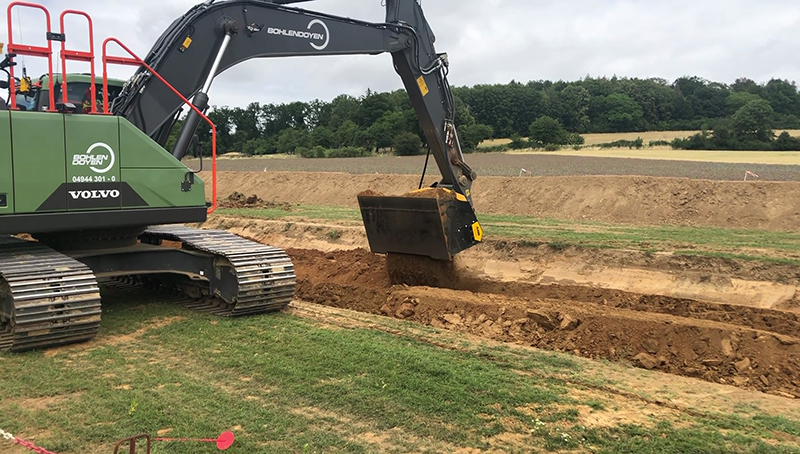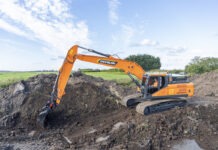 In Wartjenstedt (Baddeckenstedt), Germany took place the first test of the Wahle-Mecklar project, that saw the use of alternative technologiesto underground high-voltage cables, a shafts screener MB-HDSwas in the spotlight.
In Wartjenstedt (Baddeckenstedt), Germany took place the first test of the Wahle-Mecklar project, that saw the use of alternative technologiesto underground high-voltage cables, a shafts screener MB-HDSwas in the spotlight.
Last 9thof July,in front of political representative, media, several associations and farmers, the (TSO)TSCNET TenneT a Dutch-German electricity transmission system operator, demonstrated how to bury high voltage cables at a lower cost, faster time and above all minimizing environmental impact.
How? Well, simply by using green technology. In fact, a new special ram drove the empty ducts into the ground and a shafts screener MB-HDS320 covered it. MB Crusher unit was chosen because of its peculiarity of being able to change the shafts directly on-site according to the type of material that needs to be treated.
THE WAHLE–MECKLAR PROJECT and THE WARTJENSTEDT TEST
This pilot project for burying high voltage cables is required by the German law on the expansion of the electricity grid (Gesetz zum Ausbau von Energieleitungen – EnLAG). After more than 10 years planning this 230 km of underground power lines at a voltage of 380 Kilovolts (kV) will connect the transformation substation in Wahle bei Braunschweig in Lower Saxony with the one in Mecklar bei Ludwigsau in Hesse, hence the name Wahle-Mecklar.
The purpose is to significantly increase the capacity, stability and security of the grid supply in Germany and also to meet the ever-increasing demand for renewable energy.
The peculiarity of the project lies in the need to comply with the necessity of laying the cables underground to avoid depreciation due to electromagnetic fields, abstain from the loss of property value and possible negative effect on environment and countryside. However, as well as reduce the environmental impact the project must also be of rapid execution.
GROUND-FRIENDLY TECHNOLOGY AND THE MB SHAFTS SCREENER
Until now to underground high voltage cables, it was necessary to do huge excavations with the high deployment of machinery, workforce and time.
The Wartjenstedt test, however, has demonstrated that cable grounding is possible with minor disarrangement of the existing soil structure, halving costs and construction times at the same time. The test was carried out for a length of about 200 meters by laying the pipes for 380kV three-phase power cables.
A ground-friendly process that minimised excavation. The rich topsoil is removed and stored on-site. A special ram dug a duct for each of the three tubes, a trench 120cm wide. At the same time, the machinery placed the cables directly in the ground. Thereafter the MB-HDS shafts screener, installed on a Volvo EC250E NL excavator, sifted the dug soil directly above the trench, the excavation is filled with the same screened material of which is composed. The environment remains intact, the work is done quicklywhile the pipes are laid.
The MB-HDS shafts screener is designed to interchange the rotating shafts directly on-site and in complete safety, in just a few minutes by a single person. This innovative system is made up of a stand that will keep the rotating shafts in place, making it easy to extract and exchange them. In practice, it means having the yard always in action.







